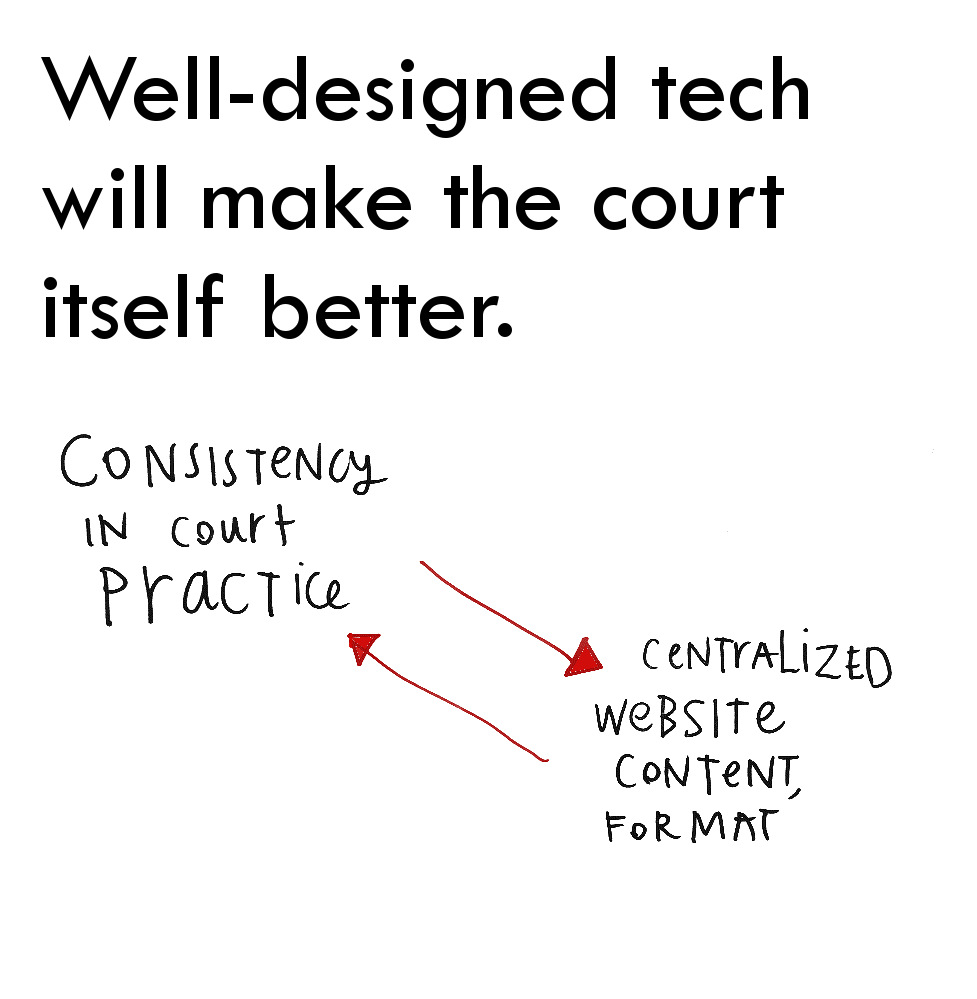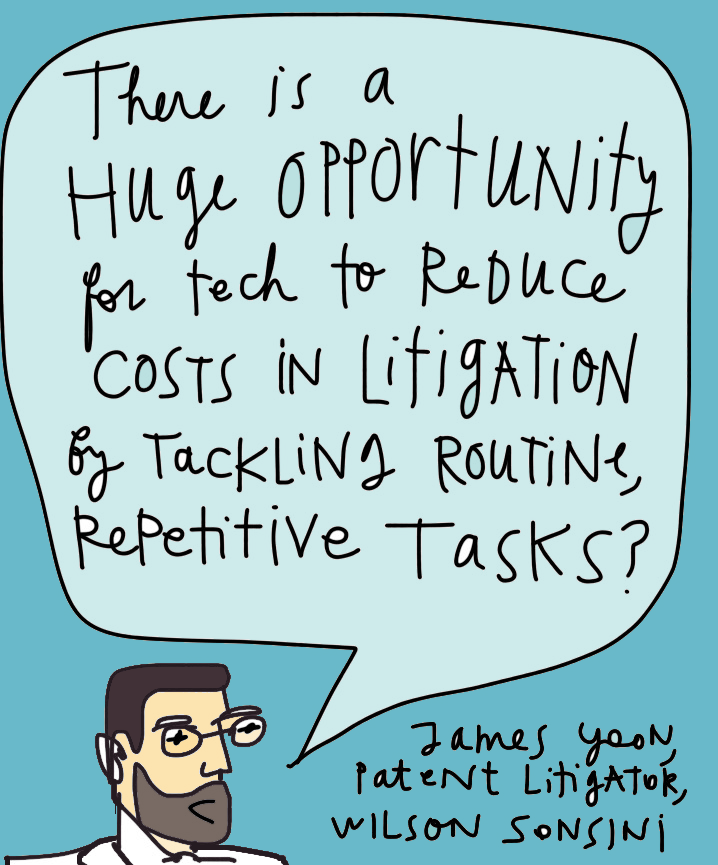Recently I was running a design workshop with several court administrators, including some who worked in it IT and others who oversaw more of the rule-making and administration of state courts. We ran through several exercises that scoped out ways to make their professional lives & work better — both for the litigants who use the court, and the professionals who work in them.
One insight that emerged was, that I thought quite profound — something I had never thought through before — is the importance of having a well-structured online version of the court’s knowledge and processes. With a more structured online system — in its public facing version, and in its internal version — there will be better court practice.
Or as one of the court workers said, and I noted down: the more the web content and format is centralized & invested in, the more consistent our court practices will be and better serve everyone who uses the court.
When it comes to our priorities for Access to Justice and improved Court User Experience, this insight points to the need for investment in better online systems.
This means breaking the court’s aversion to “all things technology” (especially after many courts have been burned by bad tech purchases, vendors that extort them, and systems that fail them). Courts must think of tech not as an add-on to their core services, but as a core service in itself — and one that can make their entire system more efficient, coherent, and navigable.
It means of thinking of court services in terms of terms of systems of services. To build better systems, we need to think through entire workflows of professionals and litigants, and establish tech platforms that can support these workflows from start to finish — and simplify them effortlessly & cleanly. If we think of the court as a series of users’ workflows, each of which is a sequence of touch points & interactions, then we can use technology to structure and guide these flows, improving them in the process.
We can’t just be tacking technology on when it seems convenient — a web page over here for one service, another web page over there for another offering. Technology should be the backbone of the service offerings, with an entire pathway for a litigant living online, and the platform coordinating all the resources, steps, and interactions that she needs to be doing to use the court effectively.
Technology can do more than just speed up court processes. It can improve the processes themselves, and improve the litigants’ and court professionals’ experiences going through them.





1 Comment
[…] Sourced through Scoop.it from: http://www.openlawlab.com […]